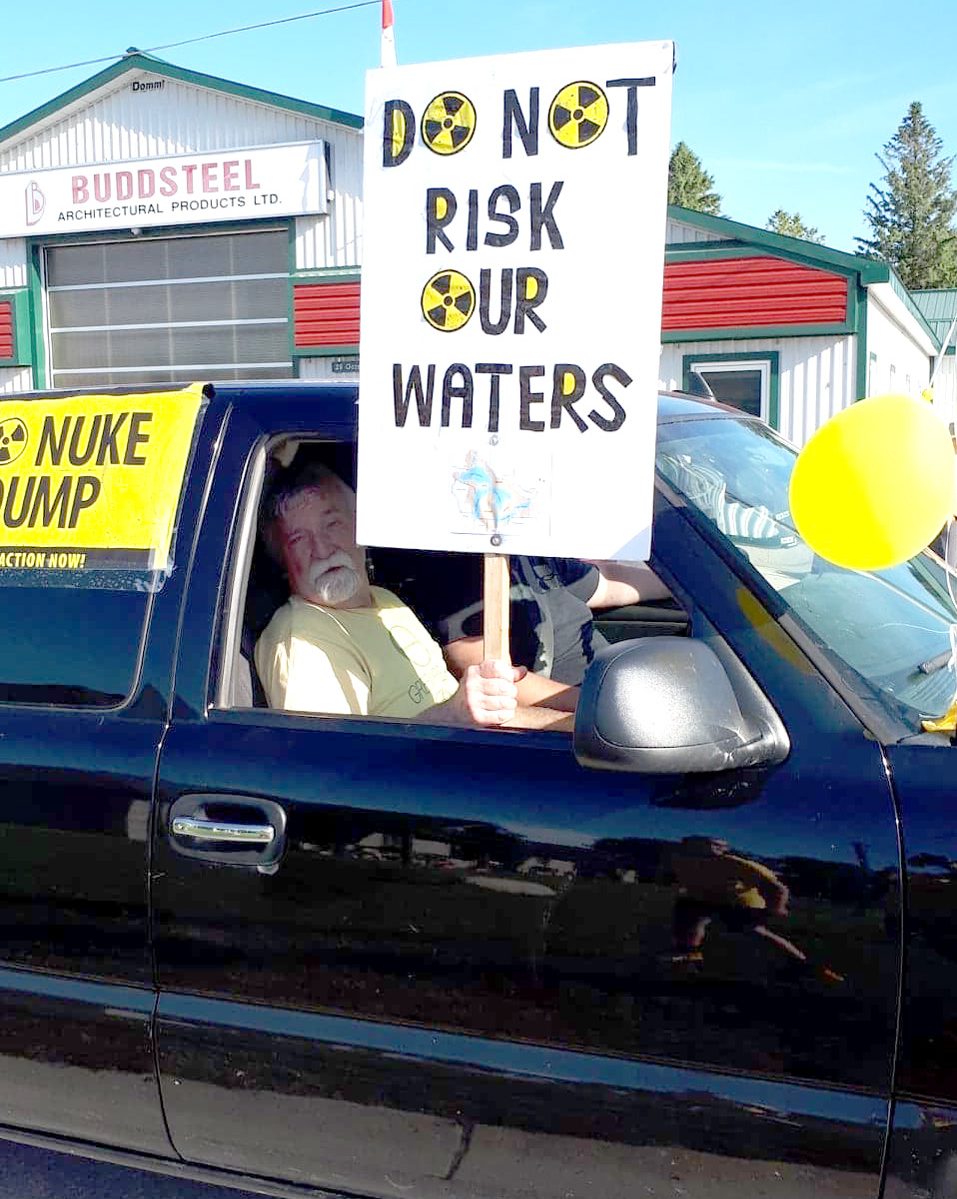TEESWATER – Organizers of a campaign to stop a high level radioactive waste Deep Geological Repository (DGR) in South Bruce say it has gained new momentum with a recent victory and hiring of a renowned environmental lawyer. However local environmental advocates caution the fight to keep radioactive material out of the South Bruce and the surrounding region is not over.
On June 22 Ontario Power Generation (OPG) announced it was formally ending plans for a low/intermediate level radioactive waste Deep Geological Repository (DGR) for the Bruce Power site near Kincardine. OPG has formally notified federal regulators it is ending plans for the low/intermediate waste DGR. The project was discontinued following a vote by Saugeen Ojibway Nation (SON) in January 2020, whereby the SON voted overwhelmingly not to support the project in their traditional territory.
The decision however, does not impact a separate proposal for a high-level radioactive waste nuclear dump in South Bruce.
“The announcement of the DGR not going ahead at the Bruce Power location seems to have created some confusion, as many people think that the spent fuel proposal is over as well. Unfortunately, it is not,” said Protect Our Waterways – No Nuclear Waste (POWNNW) spokesperson Michelle Stein in an email. While the group is celebrating the abandonment of the Kincardine DGR proposal, Stein said they “encourage people to continue to help us” stop the South Bruce project as well.
“Protect Our Waterways – No Nuclear Waste is grateful for the decision by SON community members to vote against the low/intermediate DGR and the formal cancellation of the project by OPG at the Bruce site,” said POWNNW vice-president Bill Noll. “The struggle however is not over as the Nuclear Waste Management Organization (NWMO) continues with plans to construct a high-level radioactive waste nuclear dump within the Municipality of South Bruce,” Noll added.
In a process that began nearly a decade ago, the Nuclear Waste Management Organization (NWMO) is looking for a site to store millions of bundles of used nuclear fuel. The organization has optioned approximately 1,300 acres of land north of Teeswater as a potential site to bury the waste. The decision on where to bury the high-level nuclear waste from reactors across Canada is down to the Municipality of South Bruce and Ignace, in Northern Ontario. On its website, the NWMO states it is aiming to identify a single, preferred site “in an area with informed and willing hosts” by 2023.
Protect Our Waterways has hired environmental lawyer David Donnelly (Donnelly Law) to continue the fight against nuclear waste dumping.
“I’ve always wondered why radioactive nuclear waste isn’t buried below the majority of people who use it,”said Donnelly, who first started battling uranium mining in Saskatchewan in the 1980s.
“Municipal councillors are trustees with an important duty to ensure land uses do not under any circumstances conflict with existing uses. Credibly showing how agricultural and radioactive waste complement each other is going to be a significant challenge that will be heavily scrutinized by our client”, he added.
According to a July 3 POWNNW press release the lands optioned by NWMO for the proposed dump site of highly radioactive waste are located approximately 30 kilometres from Lake Huron and would be built under and around the Teeswater River, a tributary of the Saugeen River, which flows to Lake Huron and the Great Lakes – a source of drinking water for 40 million people in both Canada and the USA. The proposed dump site would remove an estimated 1,500 acres of prime farmland from agricultural production and “replace it with an intensive mining project to effectively house this waste.”
The group is inviting all concerned stakeholders to join in the fight to prevent the project and “protect future generations.”
Seeking referendum
Protect Our Waterways – No Nuclear Waste is seeking a community referendum on the issue in South Bruce.
“The municipality and NWMO can no longer ignore this expression of opposition against this project from residents and regional stakeholders.”
The group notes that over 1,500 residents of South Bruce have signed the petition to date through both hard copy and online.
An online change.org petition has gathered over 11,000 signatures from regional stakeholders in neighbouring municipalities and waste transportation corridors concerned about this project and expressing opposition.




